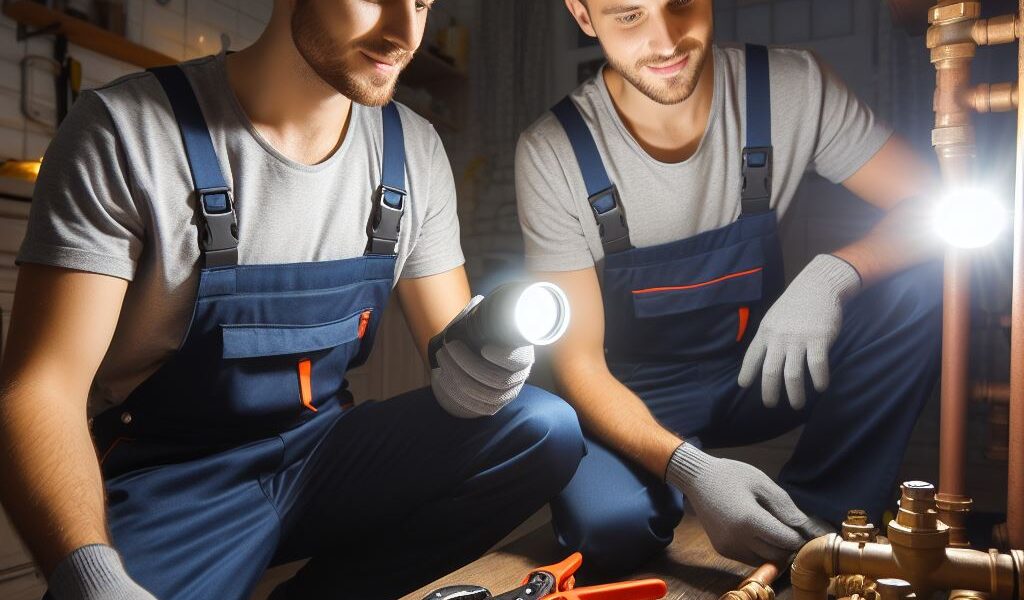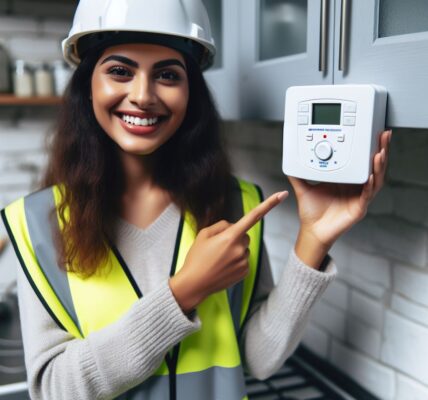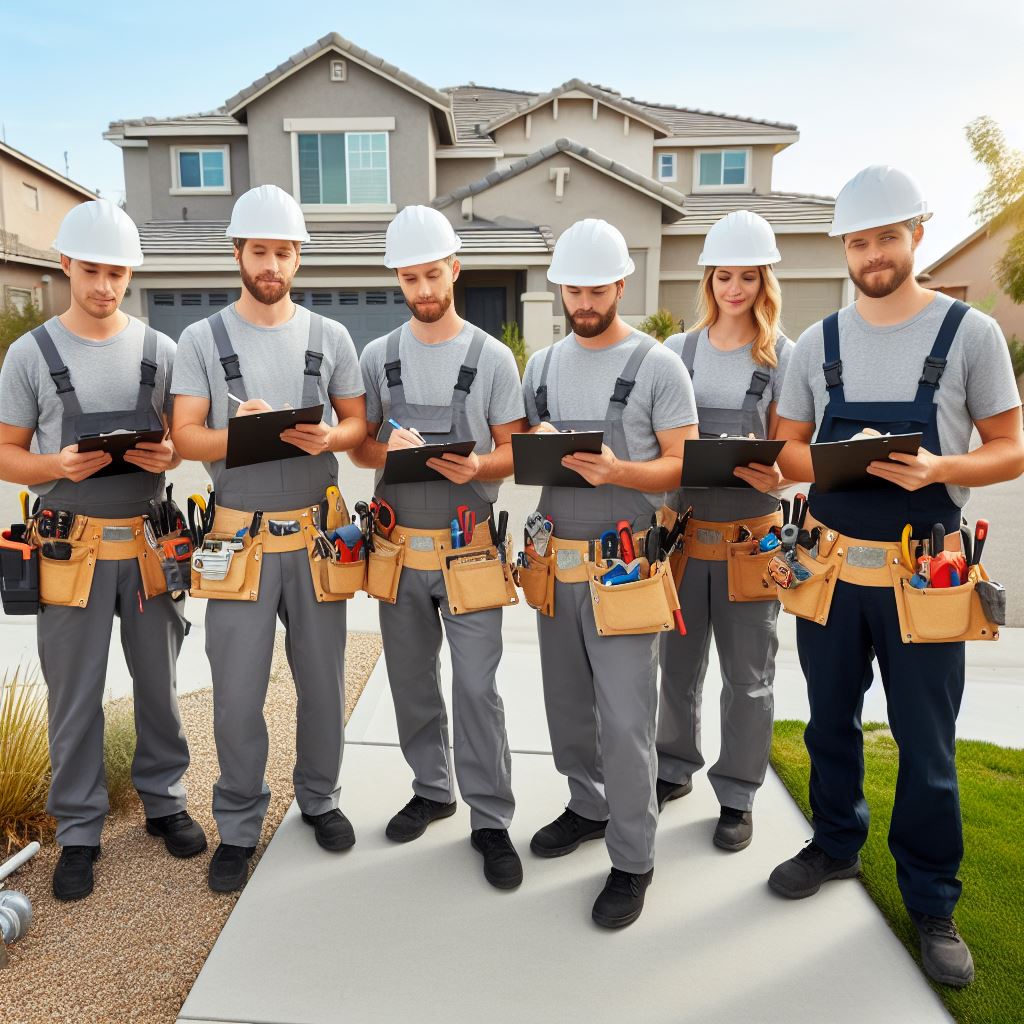Common Plumbing Issues to Look for During a Home Inspection
A home plumbing inspection is an essential part of maintaining a safe and functional living space. It is important to identify and address any potential plumbing issues before they become major problems. During a home inspection, there are several common plumbing issues that should be carefully examined.
One common issue to look for is leaky pipes. Leaks can occur in various areas of the plumbing system, such as under sinks, behind walls, or in the basement. These leaks can lead to water damage, mold growth, and increased water bills. During the inspection, it is important to check for any signs of water stains, dampness, or musty odors that may indicate a leak. Additionally, inspecting the water meter can help identify any hidden leaks.
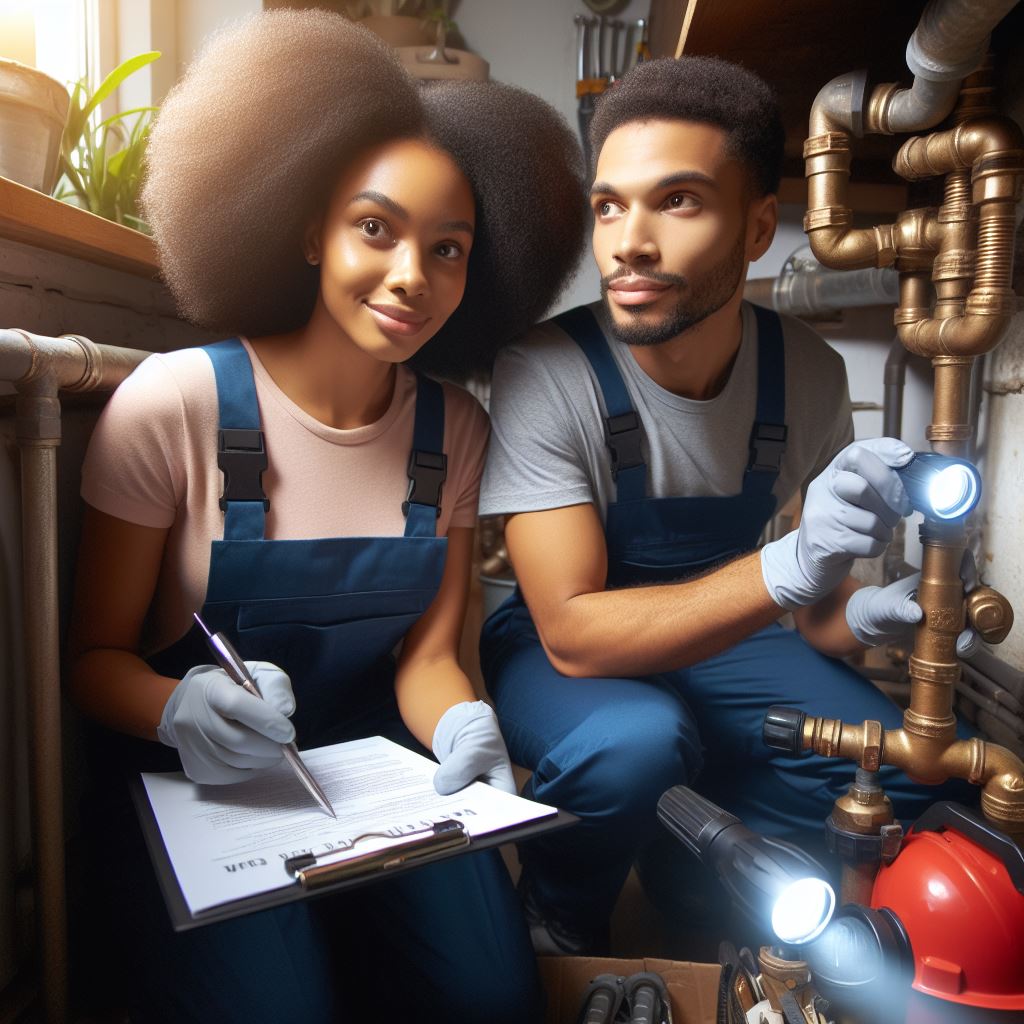
Another common plumbing issue to be aware of is clogged drains. Over time, debris, hair, and other substances can accumulate in drains, causing them to become slow or completely blocked. During the inspection, it is important to check all drains, including sinks, showers, and toilets, for any signs of slow drainage or gurgling noises. These may indicate a clog that needs to be addressed.
In addition to leaky pipes and clogged drains, it is important to inspect the water heater during a home plumbing inspection. The water heater is responsible for providing hot water to the entire house, and any issues with it can greatly impact daily activities. During the inspection, it is important to check for any signs of corrosion, leaks, or unusual noises coming from the water heater. Additionally, checking the age of the water heater can help determine if it is nearing the end of its lifespan.
Furthermore, it is crucial to inspect the toilets in the house. Toilets can develop various issues over time, such as leaks, running water, or flushing problems. During the inspection, it is important to check for any signs of water around the base of the toilet, as this may indicate a leak. Additionally, flushing each toilet and observing its performance can help identify any potential issues.
Lastly, it is important to inspect the water pressure during a home plumbing inspection. Low water pressure can be a sign of a larger plumbing issue, such as a clog or a problem with the water supply line. During the inspection, it is important to turn on all faucets and showers to check for adequate water pressure. If the water pressure is consistently low throughout the house, it may be necessary to investigate further.
In conclusion, a home plumbing inspection is an important step in maintaining a safe and functional living space. During the inspection, several common plumbing issues should be carefully examined. These include leaky pipes, clogged drains, issues with the water heater, problems with toilets, and low water pressure. By identifying and addressing these issues early on, homeowners can prevent major plumbing problems and ensure the longevity of their plumbing system.
Essential Steps for Conducting a Thorough Home Plumbing Inspection
Maintaining a well-functioning plumbing system is crucial for the overall health and safety of your home. Regular inspections can help identify potential issues before they escalate into costly repairs or emergencies. In this article, we will outline the essential steps for conducting a thorough home plumbing inspection.
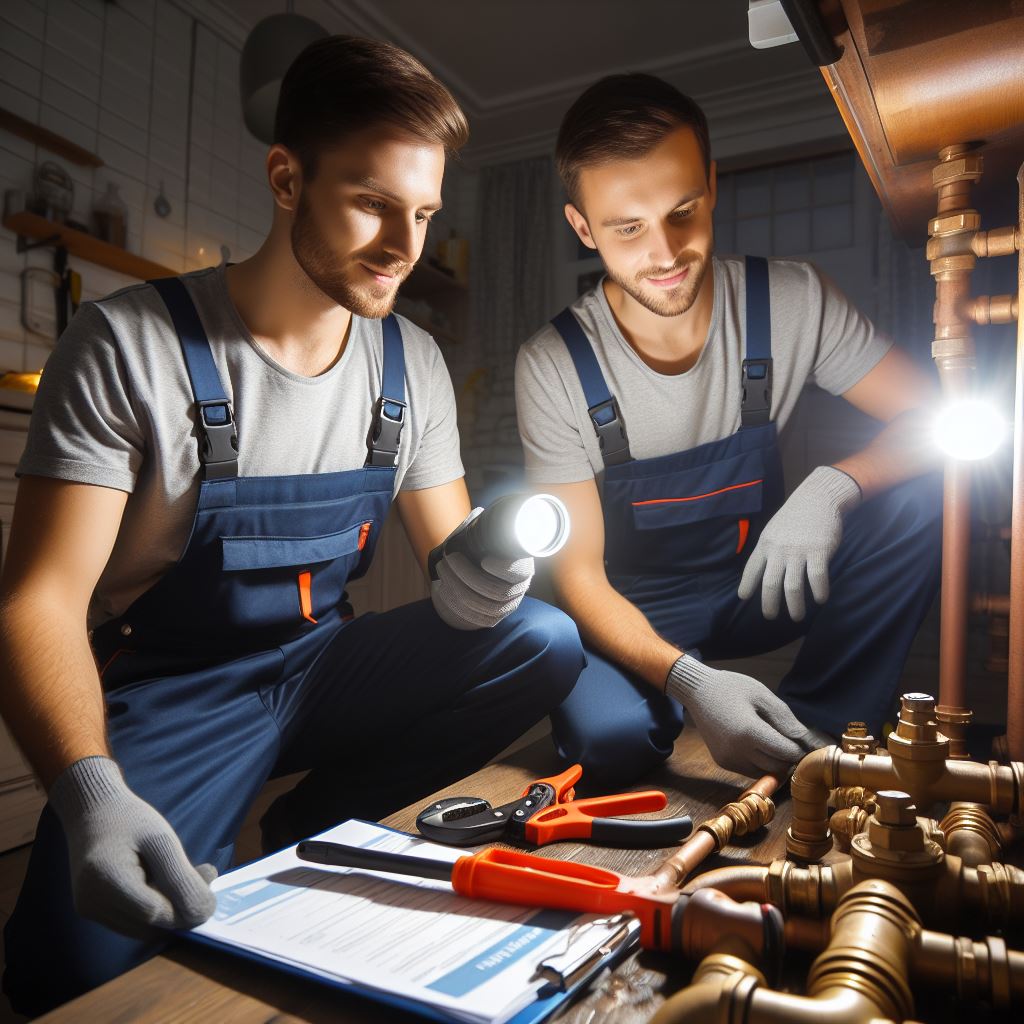
First and foremost, it is important to gather the necessary tools and equipment before beginning the inspection. These may include a flashlight, a wrench, a plunger, a bucket, and a camera or smartphone for documenting any findings. Having these items readily available will ensure a smooth and efficient inspection process.
The next step is to start with a visual inspection of all visible plumbing fixtures and pipes. Look for any signs of leaks, corrosion, or damage. Check under sinks, around toilets, and behind appliances such as washing machines and dishwashers. Pay close attention to any discoloration or dampness on walls or ceilings, as these may indicate hidden leaks.
Moving on, it is important to inspect all faucets and valves for proper functionality. Turn on each faucet and check for any leaks or irregular water flow. Test the hot and cold water separately to ensure both are working correctly. Similarly, check all valves, such as shut-off valves and pressure relief valves, to ensure they are operating smoothly.
The next step in the inspection process is to examine the water heater. Start by checking the temperature and pressure relief valve for any leaks or signs of malfunction. Inspect the tank for any signs of corrosion or rust, as this may indicate a potential failure in the near future. Additionally, drain a small amount of water from the tank to check for any sediment buildup, which can affect the efficiency of the heater.
Moving on to the bathroom, inspect the toilet for any leaks or running water. Check the tank and bowl for cracks or damage. Test the flush mechanism to ensure it is working properly and that the water stops running after flushing. Additionally, inspect the shower and bathtub for any leaks or drainage issues. Check the grout and caulking around these fixtures, as deteriorated or damaged grout can lead to water damage.
Next, it is important to inspect the kitchen plumbing. Check under the sink for any leaks or signs of water damage. Test the garbage disposal and dishwasher for proper functionality. Inspect the supply lines and drain pipes for any leaks or blockages. Additionally, check the refrigerator’s water supply line for any leaks or damage.
Lastly, it is crucial to inspect the exterior plumbing of your home. Check the main water shut-off valve to ensure it is working properly. Inspect the outdoor faucets for any leaks or damage. Additionally, inspect any irrigation systems or sprinklers for leaks or malfunctioning heads.
In conclusion, conducting a thorough home plumbing inspection is essential for maintaining a well-functioning plumbing system. By following these essential steps, you can identify potential issues early on and prevent costly repairs or emergencies. Remember to gather the necessary tools, visually inspect all fixtures and pipes, test faucets and valves, examine the water heater, inspect the bathroom and kitchen plumbing, and inspect the exterior plumbing. Regular inspections will help ensure the health and safety of your home’s plumbing system for years to come.
Signs of Potential Plumbing Problems Every Homebuyer Should Know
Purchasing a new home is an exciting and significant milestone in one’s life. However, it is crucial to conduct a thorough inspection of the property before making a final decision. While many aspects of a home inspection are well-known, such as checking for structural issues or electrical problems, one area that often goes overlooked is the plumbing system. Understanding the signs of potential plumbing problems can save homebuyers from costly repairs and headaches down the line.
One of the most common signs of plumbing issues is water stains or discoloration on walls, ceilings, or floors. These stains indicate the presence of leaks, which can lead to extensive water damage if left unaddressed. Homebuyers should pay close attention to any signs of water stains, as they may indicate underlying plumbing problems that require immediate attention.
Another red flag to watch out for is low water pressure. When inspecting a potential home, it is essential to test the water pressure in all faucets and showers. Low water pressure can be a sign of clogged pipes or a faulty water supply system. While this issue may seem minor, it can be indicative of more significant plumbing problems that may require costly repairs.
Furthermore, homebuyers should be on the lookout for unusual odors coming from drains or toilets. Foul smells can indicate sewer line issues or problems with the septic system. These issues can be not only unpleasant but also hazardous to the health of the occupants. Therefore, it is crucial to address any unusual odors promptly and thoroughly investigate their source.
In addition to odors, strange noises coming from the plumbing system can also be a cause for concern. Gurgling sounds or banging pipes may indicate air trapped in the pipes or loose connections. While these issues may seem minor, they can lead to more significant problems if not addressed promptly. Homebuyers should listen carefully for any unusual noises during their inspection and consult with a professional plumber if necessary.
Another sign of potential plumbing problems is the presence of mold or mildew. These fungi thrive in damp environments, making them a common occurrence in homes with plumbing issues. Mold and mildew not only pose health risks but can also cause structural damage to the property. Homebuyers should thoroughly inspect areas prone to moisture, such as bathrooms and basements, for any signs of mold or mildew growth.
Lastly, homebuyers should pay attention to the age and condition of the plumbing system. Older homes are more likely to have outdated plumbing systems that may be prone to leaks or other issues. Additionally, homes with galvanized pipes, which were commonly used in the past, may be at a higher risk of corrosion and subsequent plumbing problems. It is essential to consider the age and condition of the plumbing system when evaluating a potential home.
In conclusion, conducting a thorough inspection of the plumbing system is crucial for homebuyers to avoid potential problems and costly repairs. Signs such as water stains, low water pressure, unusual odors, strange noises, mold or mildew growth, and the age and condition of the plumbing system should not be overlooked. By being vigilant and addressing any potential plumbing issues before purchasing a home, homebuyers can ensure a smooth and worry-free homeownership experience.
